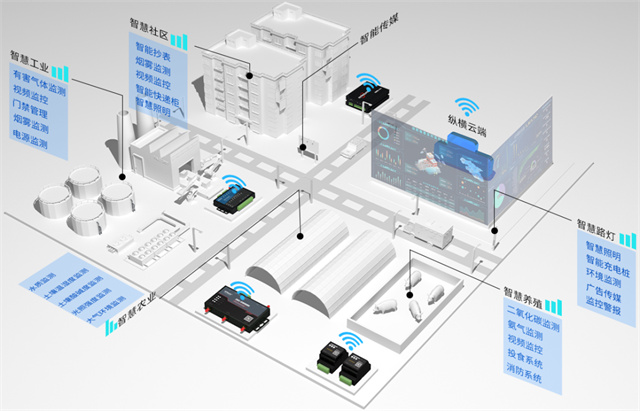LoRa (i.e. Long Range Wireless) wireless communication is a low-power long-distance communication technology suitable for IoT applications. It transmits data over the radio spectrum, enabling wide-area coverage, low power consumption and long battery life. This article will introduce how to simply use the LoRa module to help you better understand and apply IoT technology.

1. Basic concepts of LoRa module
The LoRa module is a hardware device used for long-distance wireless communication. It consists of a LoRa chip and a radio frequency module. The LoRa chip is an integrated circuit specifically used for LoRa communication, and the radio frequency module is responsible for sending the data processed by the chip or receiving external data. The two together form a wireless communication module that can be used for IoT devices.
2. Characteristics and advantages of LoRa module
-
For long-distance communication , the LoRa module uses low-power transmission technology and can transmit data several kilometers away in indoor or outdoor environments.
-
Low power consumption , the LoRa module consumes very little power in standby mode, allowing long-term use, and the chip can also save energy when processing data.
-
Multi-connection , one base station can communicate with multiple LoRa nodes at the same time to achieve many-to-many connections.
-
Wide area coverage , LoRa module can achieve wide area coverage in various environments such as cities and rural areas, and is suitable for various IoT application scenarios.
-
Encrypted security , the LoRa module supports encrypted transmission of data, providing higher security.
3. Steps to use LoRa module
1. Hardware connection , connect the LoRa module to your IoT device, ensure the correct connection method and ensure normal power supply.
2. Configure parameters . Before using the LoRa module, you need to configure some parameters, such as frequency, spreading factor, bandwidth, etc., to ensure normal communication between modules.
3. Send data , use the API or command of the LoRa module to send data, and send the data you need to transmit to the target node.
4. Receive data . If you need to receive data from other nodes, you can set the LoRa module to receive mode and process the received data.

4. Common application scenarios
-
In the agricultural field , LoRa modules can be used to monitor soil moisture, meteorological data, irrigation systems, etc., and transmit the data to the cloud platform for analysis and decision-making.
-
Urban Internet of Things , LoRa modules can be used for smart parking, trash can management, environmental monitoring and other applications in cities to achieve intelligent management of cities.
-
Industrial control , LoRa modules can be used to transmit sensor data, such as temperature, humidity, pressure, etc., to help industrial control systems perform real-time monitoring and control.
-
Logistics and warehousing , LoRa modules can be used to track the location of goods, monitor temperature and humidity, etc., to improve logistics and warehousing efficiency.
In summary , the LoRa module, as an important application of IoT communication technology, has the advantages of long-distance communication, low power consumption, multiple connections and security. By simply using the LoRa module, you can build your own IoT devices and apply them to various application scenarios, such as agriculture, urban IoT, industrial control, logistics and warehousing, etc., to help achieve intelligent management and efficient operations. I hope this article can provide you with some basic understanding and guidance on the use of LoRa modules.